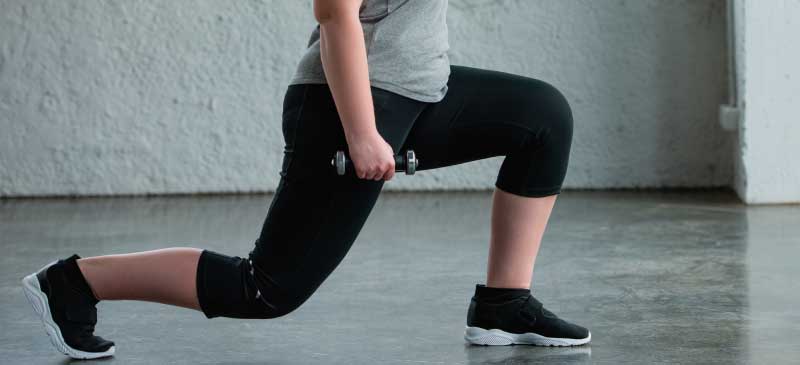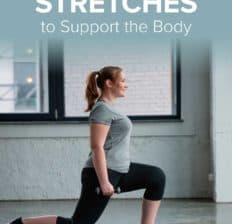This Dr. Axe content is medically reviewed or fact checked to ensure factually accurate information.
With strict editorial sourcing guidelines, we only link to academic research institutions, reputable media sites and, when research is available, medically peer-reviewed studies. Note that the numbers in parentheses (1, 2, etc.) are clickable links to these studies.
The information in our articles is NOT intended to replace a one-on-one relationship with a qualified health care professional and is not intended as medical advice.
This article is based on scientific evidence, written by experts and fact checked by our trained editorial staff. Note that the numbers in parentheses (1, 2, etc.) are clickable links to medically peer-reviewed studies.
Our team includes licensed nutritionists and dietitians, certified health education specialists, as well as certified strength and conditioning specialists, personal trainers and corrective exercise specialists. Our team aims to be not only thorough with its research, but also objective and unbiased.
The information in our articles is NOT intended to replace a one-on-one relationship with a qualified health care professional and is not intended as medical advice.
Hip Flexor Stretches Are Key to Both Hip & Knee Health
June 27, 2023

Our hip flexors aren’t understood very well and often ignored when we exercise. However, if it weren’t for the hip flexors, we would not be able to sit down, which makes hip flexor stretches and exercises vital if you want to be able to do everyday activities throughout your life.
The hip flexors form a very important group of muscles allowing us to bend at the waist. These muscles are found deep within the abdominal area and are some of the strongest muscles in the body, ultimately providing core support and improving knee strength.
The hip flexors are activated the most when sprinting or kicking. Therefore, it makes sense that athletes — especially soccer players, football players and runners — are prone to issues with their hip flexors and why they should make sure to incorporate hip flexor stretches and exercises into their fitness and recovery routines.
What Are the Hip Flexors?
The hip flexors are a group of muscles in the pelvic region and upper thighs that help drive up the knees and keep the pelvis and thighs aligned, which is a key running tip for beginners that can help prevent knee problems. Healthy hip flexors aren’t important for just runners or athletes, however — they’re vital for everyone.
To gain a better understanding of the hip flexors and why we need them, let’s talk a little anatomy. Flexion is a joint movement that decreases the angle between the bones that converge at the joint and is typically initiated by a muscle contraction.
A muscle that flexes that joint is called a flexor. The muscles that make up the hip flexors are collectively known as the iliopsoas or inner hip muscles. Without the iliopsoas muscles, kicking, running, sprinting and even sitting would not be possible.
Hip Flexor Stretches
A sports medicine doctor may recommend exercises to help stretch and strengthen your hip flexors so you prevent injury. These exercises are not just for those who are injured, though.
The best way to think about it is to prevent the injury in the first place by performing these exercises as part of your weekly or even daily routine, especially if you are susceptible to hip-related injuries.
However, if you have encountered a hip injury, swimming may be a great way to exercise and strengthen your core while you are in the resting phase of healing. Eventually, you can begin to work at home or at the gym using some of these exercises here.
For a severe strain, you may want to see a physical therapist. The therapist will work with you to help stretch and strengthen your hip flexor muscles and other muscles that surround and support that area and guide you in increasing your activity level so you can return to your former activities.
Here are some of the best hip flexor stretches to try whether you’re recovering from an injury or simply trying to strengthen your hip area.
Front Hip Flexor Stretch
Place your left knee on the ground and your right knee up with your foot on the ground at a 90-degree angle. Place your hands on your right thigh.
Lean your hips forward to create a stretch in the front hip area. Hold for five seconds, and repeat five times. Then do the other side.
Quad Stretch and Hip Strengthener
Lie on your back with knees bent and feet flat on the floor. Feet should be somewhat close to your butt.
Lift your hips toward the ceiling, and hold for three to five seconds while squeezing your butt and tightening your abs. Release. Repeat 10 times.
Seated Butterfly Stretch
Sit on the floor with your back straight, shoulders down, abs engaged. Press the soles of the feet together in front of you, with your knees bent to the sides.
Try to pull your heels toward you while relaxing your knees toward the floor. Do not push your thighs down to the floor with your hands, but rather use your thigh and core muscles to try to push them down. Breathe deeply, and hold for 10–20 seconds.
Supine Hip Flexor Stretch
Lie on your back on the floor. Bring your left knee toward you to the point of being able to reach behind your left thigh. Gently pull your leg toward you for an increased stretch.
Breathe deeply, hold for three to five seconds and release. Repeat on the other side for a total of five per side.
Benefits of Hip Flexor Stretches
1. Better Performance for Athletes
Runner’s World reports that weakness in the hip flexors can contribute to slower running times, improper form and, according to a review presented at an annual meeting of the American College of Sports Medicine, a host of lower-leg running injuries.
“The body has the capacity to compensate for weak hip flexors, but the strategies to do that can lead to muscle imbalances and injury,” says Gregory Holtzman, PT, DPT, associate professor of physical therapy at Washington University School of Medicine in St. Louis and director of the university’s Running Clinic, who recommends performing strengthening exercises three or four days a week.
2. Less Risk of Injury and Better Range of Motion
If the hip muscles are strong, they provide you with the support you need and ultimately help prevent injuries, especially if you are an athlete or an aging adult. Because this muscle group provides so much of your core stabilization, you need the hip flexors to be strong for simple functions of daily life, too.
If the muscles in the hip joint area are too tight, it can affect your range of motion. It is important to keep the soft tissue around your hip loose.
To improve flexibility, you can massage the iliotibial bands located on the outside of your upper thigh, your hip adductors located in your inner thigh and your hamstring muscles.
To do this, do foam roller exercises, or use a small ball like a baseball, golf ball or tennis ball to massage these areas. Apply moderate pressure, and roll the roller or ball up, down and at various angles over the muscle or ligament — but be gentle at the sensitive spots.
This combined with some of the stretches and exercises above should help increase your range of motion in any activity.
3. Walk Longer, Stand Longer and Improve Balance
Are you someone who worries about long walks, even a walk to the car? The hip flexor is a major stabilizer of the lower body, so if your hip flexor is too weak, you’ll suffer from poor balance and postural problems.
If you have problems with your hip joints and frequent misalignments in your lumbar spine, you’ll have trouble standing and walking for long periods of time, and you may have problems with your gait. Consider beginning walking to lose weight as well as a strengthening program for your hips to help prevent these concerns and give you better quality of life.
4. Better Support for Your Back
The hips help drive us forward and stabilize our landing while preventing excess side-to-side motion that could strain the back. If your hip flexors are overdeveloped, tight, stiff or short, you’ll likely suffer from lower back pain.
You could experience a limited range of motion in the lower back because tight hip flexors pull your pelvis into an unnatural forward tilt, which in turn pulls your lumbar spine out of alignment, causing lower back pain.
Hip Flexor Strengthening Workout
Reverse Lunge: Stand with your feet shoulder-width apart. You may want to hold on to a chair while performing this exercise.
Take a step backward with your right foot, and lower into a lunge. Push through your left heel to stand. Immediately lower back into a lunge.
Focus on a strong core, and keep the upper body as upright as possible. Do three sets of 12 reps on each side.
Advanced Reverse Lunge with Knee Drive: Perform the same movement as above, but when you push through your left heel, drive your right knee up until it’s parallel to the floor. Return to standing position, and repeat.
Seated Hip Flexion: Sit in a chair or on a bench with good posture. Raise your right knee up toward your chest, making sure that your thigh does not roll in or out. Pause, and then slowly lower your knee to start.
If at first you can only lift a little, don’t worry — over time, you will be able to lift a bit higher. Do three sets of 12 reps on each side.
High Knees: While standing on your left leg, raise your right knee as high as you can, and then repeat with the other leg like a slow march in place. Do this for 30 seconds three times.
Advanced High Knees Run: The movement is the same as above, but quickly alternate legs as if running with high knees. Do this for 30 to 60 seconds five times.
Single-Leg Knee Lift: While standing on your right leg, lift your left knee until your thigh is parallel to the floor. Hold for 10 seconds. A trick to help with balance is to stare at a spot that is a few feet in front of you that is not moving.
Keep abdominals tight. Do three sets of 10 reps on each side.
How to Reduce Injury Risk
You may be wondering how to distinguish if a pain is associated with the hip flexor. Hip flexor pain is usually felt in the upper groin region where the thigh meets the pelvis. If you notice a pain in this area, it is important to take steps to help prevent an injury or further increase an injury in the hip flexors.
Hip injuries are most often preventable because they are due to lack of strength and flexibility in the hip flexor muscles. Because of the stress placed upon this region of the body, it is critical that you take good care of it.
When you are less flexible, it can prevent you from moving around as much as you normally would, leading to more stiffness and even pain. We all know that the less you move, the harder it is easy to stay active. This is all part of good health and maintaining strong hip flexors.
When you sit too much, you can cause shortening of this muscle group. Common reports of injuries occur from those who sit all day and then have a sudden burst of activity, even as simple as being in a hurry or running to catch a cab or a plane, because it causes an unexpected lengthening of the hip flexor muscles. This is why it is important to maintain strength and flexibility in the hip flexors.
Hip flexors also support many other areas of the body.
A study was conducted of 68 high school cross-country runners (47 girls, 21 boys) in which isometric strength tests of the hip abductors, knee extensors and flexors were performed with a handheld dynamometer. Runners were prospectively followed during the 2014 interscholastic cross-country season for occurrences of anterior knee pain (AKP) and shin injury as they examined risk relationships between strength values and occurrence of AKP and shin injury.
While hip and knee muscle strength was not significantly associated with shin injury, it was associated with knee injury. The high school cross-country runners with weaker hip abductor, knee extensor and flexor muscle strength had a higher incidence of AKP — therefore increasing hip and knee muscle strength may reduce the likelihood of AKP in high school cross-country runners.
A 2015 study reported by the Clinical Physiology and Functional Imaging journal showed that both static stretching and dynamic stretching imposed benefits of strengthening and flexibility of the hip flexor muscles, which can lead to subsequent performance enhancements.
Fourteen highly trained subjects were tested before and following separate sessions of eight repetitions of 30 seconds of both static and dynamic hip flexion stretches with the goal of testing the hip flexor range of motion (ROM), isokinetic leg flexion torque, and power of the stretched and contralateral limbs.
The stretched limb had a 6.3 percent ROM increase with dynamic stretching at 10 minutes. The non-stretched hip flexors experienced ROM increases with static stretches of 5.7 percent, whereas dynamic stretches showed up to 8.4 percent increase in range of motion.
Conclusion
- The hip flexors affect more than just the hips. In fact, they are crucial for core and knee health, which makes hip flexor stretches important to maintain a pain-free lifestyle.
- The benefits of hip flexor stretches include better performance and range of motion, less risk of injury, improved balance, ability to walk and stand longer, and better support for the knees and back.
- Some of the best hip flexor stretches are front hip flexor stretch, quad stretch and hip strengthener, seated butterfly stretch, and supine hip flexor stretch.
- Try a hip flexor strengthening workout to support your entire body, and make sure to keep up with hip flexor stretches on a regular basis.




